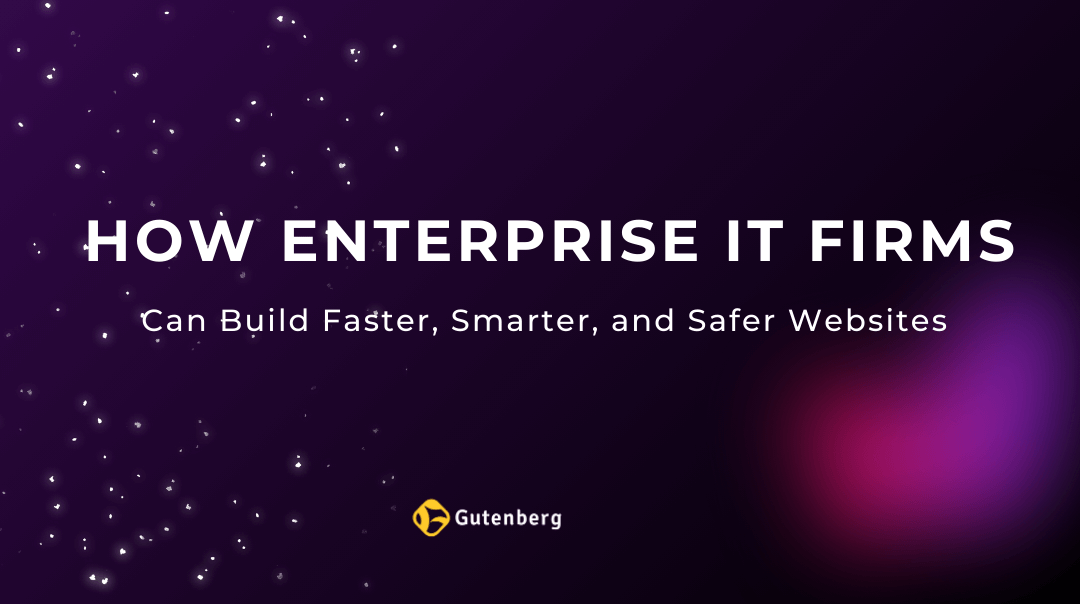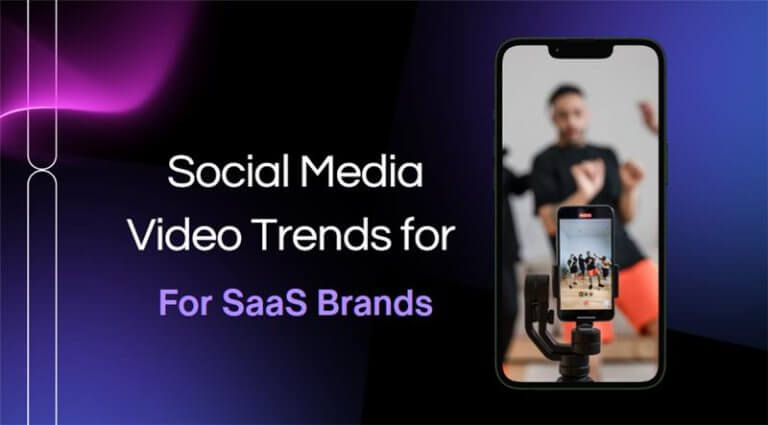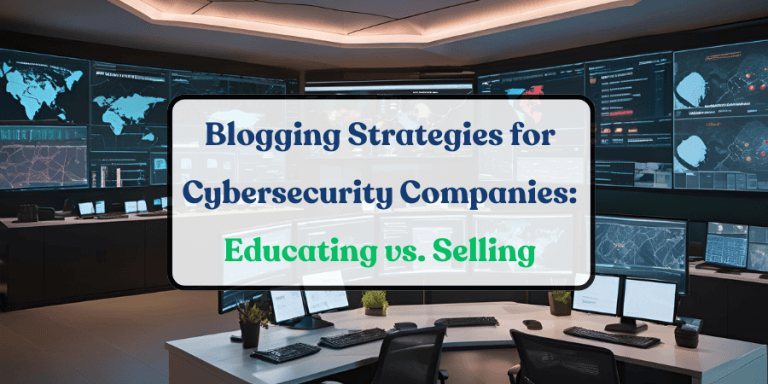In the enterprise IT world, your website isn’t just a digital storefront—it’s often the first and sometimes the only impression you get to make. Whether it’s a CTO, technical evaluator, or procurement lead exploring your capabilities, a slow, clunky, or confusing experience sends the wrong message. These high-stakes visitors won’t wait around or give feedback—they’ll simply move on.
According to a study by Google, 53% of mobile users abandon a website if it takes longer than 3 seconds to load. Meanwhile, Deloitte reports that a 0.1-second improvement in enterprise site speed can boost conversion rates by up to 8%. For IT firms serving global clients and managing complex services, these few seconds can have long-term implications that heavily impact ROI for organizations with significant investments in their digital presence.
This blog covers the best practices for optimizing Enterprise IT Websites for superior performance by combining structure, speed, security, and a user experience built for the enterprise buyer.
Why Website Performance Matters for Enterprise IT Firms
Enterprise IT firms target senior IT leadership, including CTOs, IT directors, and procurement managers. Their technical expertise means they quickly assess a website’s performance. A slow-loading or outdated site is not just inconvenient. It signals inefficiency and can be perceived as a reflection of the firm’s operational standards and culture. In these high-consideration environments, even small friction points can influence perception and decision-making.
Take, for example, an IT consulting firm offers cloud migration that highly depends on their website for customer interaction & inbound leads. If their website takes five seconds to load, lacks clarity in its service offerings, and buries its case studies under three menu layers, it introduces friction into a high-stakes buying decision. The consequence isn’t just a missed opportunity; it’s a misalignment between digital presence and business capability.
Website performance also directly impacts SEO. Google prioritizes enterprise site speed and mobile usability as ranking factors. Without a high-performing site, even well-researched content struggles to reach the right audience.
IT Web Design Best Practices for Enterprise Firms
The design of an enterprise IT website should not be flashy. It should be clear, intentional, and structured for decision-making.
Here are a few IT web design best practices that stand out:
- Logical architecture: Structure the site with top-level navigation around services, industries, insights, and company information. Avoid deep, hidden layers
- Service clarity: Break down complex services into digestible summaries, backed by relevant case studies or technical resources
- Responsive design: With nearly 60% of web traffic coming from mobile, your site should work seamlessly across devices and screen sizes
- Consistent branding: Fonts, color schemes, and button styles should reflect your firm’s identity and create a cohesive experience
- Effective CTAs: Use clear CTAs like “Schedule a Call” or “Request a Demo” instead of vague prompts like “Learn More”
- SEO-friendly structure: Use clean URLs (e.g., /cloud-consulting/ instead of /page?id=123), alt tags, and meta descriptions
A good example here is Rackspace Technology. Their site presents complex cloud solutions in plain language, with clear segmentation by industry and offering. Everything is just a few clicks away, and the CTAs are placed thoughtfully.
The Role of Site Speed in Enterprise IT Website Optimization
Enterprise site speed is more than a technical checkbox and it shapes user perception and directly affects business outcomes. According to Portent, a B2B site that loads in 1 second has a conversion rate 3 times higher than one that loads in 5 seconds.
Common enterprise site speed blockers include:
- Heavy JavaScript libraries
- Unoptimized images and videos
- Excessive use of third-party plugins
- Large CSS files
To improve enterprise site speed:
- Use a CDN (Content Delivery Network): Distribute content via multiple servers globally to reduce latency
- Compress and lazy-load images: Tools like TinyPNG or built-in CMS compression can reduce image weight by up to 70%
- Minify CSS and JavaScript: Remove unused code and reduce file sizes
- Leverage server-side rendering (SSR): Especially helpful for content-heavy pages that need to appear instantly
A helpful comparison: SynergyTop highlights how shifting to SSR and reducing third-party scripts brought a 40% improvement in load time for one of their enterprise clients. It’s rarely one big fix. It’s about improving a combination of small elements that add up.
Security-First Approach for IT Websites
Secure IT websites aren’t a bonus for IT firms. They’re a baseline. A single vulnerability on the company website can seriously undermine trust, lead to data leaks that can breach compliance standards and increase changes of ransomware that can result in heavy monetary losses.
Here’s how to make secure IT websites:
- Always use HTTPS: Even if there’s no login or transaction, HTTPS encrypts data and is now a default trust signal
- Regular updates: Keep plugins, themes, and CMS platforms up to date to patch vulnerabilities
- Use a web application firewall (WAF): This protects against common attacks like SQL injection or cross-site scripting
- Secure contact forms: Avoid default forms. Use CAPTCHA, backend validation, and IP filtering to prevent spam and abuse
- Backup automation: Regular backups can reduce recovery time in the event of a breach or crash
Example: Palo Alto Networks ensures that every interaction on their site, even newsletter sign-ups, passes through multi-level verification and encryption layers. This isn’t just about brand optics. It’s expected from an IT security leader.
UX Considerations for Technical Buyers
UX for IT firms is often overlooked, and in enterprise websites, buyers expect to find what they’re looking for quickly and with minimal fuss.
Key strategies for improving UX for IT firms:
- Make complex content easy to scan: Use headings, bullet points, and visuals. Break down detailed services into short overview plus optional “Read more” sections
- Use interactive tools: ROI calculators, solution finders, or tech stack configurators are valuable to buyers doing early research
- Offer gated technical assets: Whitepapers, case studies, or deployment guides help nurture interest while capturing qualified leads
- Implement smart search: For large websites, an advanced search with filters can save users from endless browsing
One example is Snowflake. Their site caters to data architects, CIOs, and analysts, all with different levels of expertise. Their UX for IT firms is clean, segmented by user type, and full of self-service resources.
Good UX doesn’t need to be artistic. It needs to be intuitive.
Bringing It All Together: The Case for Enterprise IT Website Optimization
Enterprise IT Website Optimization is not a one-time project. It’s a continuous improvement cycle aligned with business goals and the behavior of decision-makers. A well-optimized site attracts better lead quality by delivering relevant content quickly, helping visitors find what they need without friction. This contributes to shorter sales cycles, as decision-makers can evaluate services more efficiently. Improved technical performance leads to lower bounce rates and higher on-page engagement, making it easier to maintain interest. It also supports enhanced SEO visibility, helping IT firms show up for relevant, high-intent searches. Together, these improvements strengthen brand positioning within highly competitive segments of the IT industry.
How Gutenberg Helps Enterprise IT Firms Build Performance-Focused Websites
At Gutenberg, we’ve worked closely with global B2B tech companies and IT consulting firms to develop websites that aren’t just functional. They perform under pressure.
- UX for IT firms and content strategy aligned with enterprise buying behavior
- SEO-optimized builds with a focus on enterprise site speed and technical structure
- Secure IT websites with thoughtful implementations
- Modular CMS development that allows internal teams to manage updates without friction
Whether the goal is better conversion, faster navigation, or increased visibility, our focus remains the same. We build websites that work as hard as your business does.
Conclusion
Enterprise IT websites are no longer just about digital presence and are a key part of how trust is built, information is evaluated, and buying decisions are made.
By focusing on enterprise site speed, structure, secure IT websites, and UX for IT firms, enterprise firms can reduce friction and increase their ability to convert interest into engagement.
If your site doesn’t reflect your technical capability or business value, it’s time to rethink the approach. And if you’re not sure where to start, teams like Gutenberg can help you move forward with clarity.











